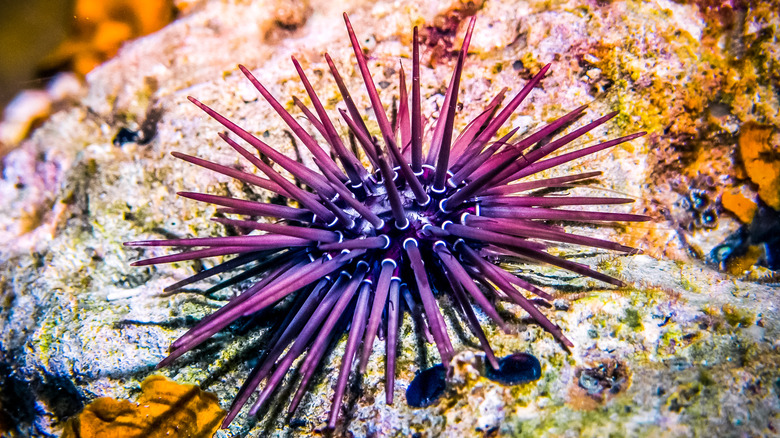The Complex Criteria Behind Picking The Freshest Sea Urchin
When you're gathering together ingredients, freshness should be at the front of your mind. A meal could be prepared with all the love in the world, but if the chicken in the crockpot has gone bad, the dinner doesn't stand a chance. But finding the freshest food goes beyond simply checking the expiration date.
Mushy patches and mold can tell you when your fruit is spoiled, but did you know that produce has a season? The USDA tells us that different fruits and vegetables grow best under certain climatic conditions — blueberries and honeydew, for instance, are best enjoyed in the spring, while oranges thrive in the fall and winter. It isn't just produced that is at its freshest and most plentiful during a particular time of year. The peak lobster breeding is dependent upon the weather, per Southern Living. In warm areas, the shellfish don't breed until the water cools down in the fall and winter, while in colder spots, the summer sun warms the water to the appropriate temperature. When you're trying to choose the freshest sea urchin, there are a number of things for you to consider.
The reason for the sea urchin season
First and foremost, the most important factor in determining the freshest sea urchin is whether or not the spiny sea critter is in season. According to La Petit Noisette, different types of sea urchins, or uni, taste best at different times. On Honshu, the main island of Japan, there are two prevalent types of sea urchin — Bafan and Murasaki uni. The latter type, Japan's most common sea urchin, is harvested in August, while the former has an October season, per La Petit Noisette.
La Petit Noisette explains that sea urchin is at their most delicious during the spawning season. When a sea urchin spawns, it also becomes less flavorful, as uni is actually just a sea urchin's gonads, or reproductive organs. A similar phenomenon inspired the notion that oysters should only be eaten in months with the letter 'r' in their names, per The New York Times. An oyster's gonads make up a sizable percentage of its body, so an oyster becomes more watery in the spawning season.
How to tell if your uni is fresh
BravoTV interviewed Matt Kim, an avid sea urchin diver, and asked him to explain how curious consumers who lack access to freshly caught uni can find a suitable alternative at their local seafood market. Kim explains that texture is a key factor in determining a uni's freshness. The exterior of uni meat should be rough — Kim says fresh uni looks like carpet. As the shellfish ages, it begins to take on a smoother texture.
The smoothness of old uni can compromise your dining experience. According to the Michelin Guide, though sea urchin is naturally a soft meat, fresh uni should offer a bit of resistance when you bite into it. Old uni turns to mush in your mouth.
Additionally, Harbor Fish Market tells us that fresh uni should be brightly colored. However, given the fact that sea urchin meat comes in a wide variety of colors, that isn't necessarily the best metric to go by. A better indicator might be the smell. Fresh uni smells faintly oceanic, while the old stuff has a fishy odor.


